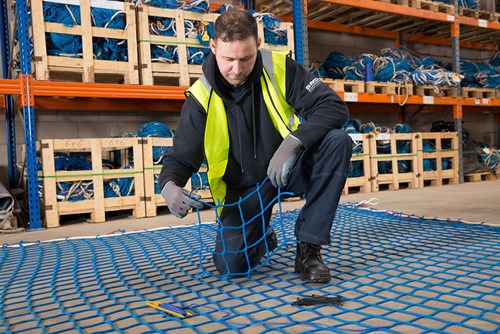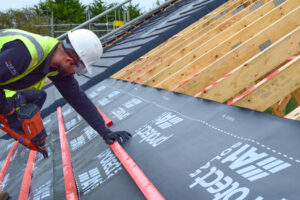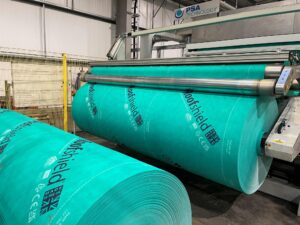Need to use safety netting? FASET, the UK trade body for the safety netting and temporary safety systems industry, provides you with some top tips.

1. Who’s rigging your netting?
First things first, if you are using a non-FASET-audited company, will your safety nets work if they have to save a life?
With the duties that the new CDM and Work at Height Regulations place on clients to employ competent contractors, you can only be 100 per cent sure of safe working practices to the latest industry guideline when you’re employing a company that has been audited and complies with best practice.
The simplest way to guarantee that, is by using an audited FASET Member. Our members hold suitable and valid insurance, only employ qualified personnel, follow correct installation procedures in accordance with BS EN 1263-2, BS 8411, FASET Guidance, and also have adequate directly employed management and supervisory staff, safety procedures and policies in place.
However, evidence of FASET trained personnel is not a guarantee that the company is a FASET member. Please visit the FASET member list on the FASET website and ask to see the company’s Annual FASET Membership Certificate and their FASET SSiP Accreditation Certificate.
2. Are the nets used safely?
Are the safety nets being used compliant to BS EN 1263-1—including the often-overlooked inspection, annual UV testing, repair and maintenance procedures?
Every net must have an ID label with the date of manufacture, net system and class, net size and reference to the product standard (BS EN 1263-1: 2014). They also have a unique serial number, allowing the net to be traced.
Is there a UV test mesh in place? Each new net must have removable test meshes with their own serial number traceable to that particular safety net. Each year a mesh is removed and tested.
3. Do you have a rescue plan in place and has it been practiced?
Every safety net rescue is unique and needs careful planning and management. Consider the type of rescue on each job—will they be cut out of the net from below using MEWP, or rescued from above, for example? What if the rescue is different form planned. Is there a plan B, C and D?
You need to challenge the workability of the rescue plan all the time and so planning is critical in order to avoid panic in the event of a fall and rescue situation.
4. How far can someone fall into a safety net?
BS EN 1263-2: 2014 Temporary Works Equipment. Safety Nets. Safety Requirements for the Positioning Limits states that the maximum permissible fall height into a safety net is 6m from the work position—which means that the maximum nominal fall height from the centre of gravity of a person is 7 m.
However, Regulation 6 of the Work at Height Regulations 2005 deals with the avoidance of risks from working at height. The regulation requires that where falls cannot be prevented, measures are put in place to:
Minimise the distance and consequence of a fall so far as is reasonably practicable. However, if it is not reasonably possible to minimise the distance, then measures must be taken to minimise the consequence of a fall.
In practice this means that the fall distance into a safety net must be as little as is reasonably practicable, which will usually be the underside of the structure being worked on, because the greater the fall distance into a net the greater the likelihood of injury.
At FASET we make it simple and say the safety net should be as close as possible to the working platform.
5. When should a safety net be inspected?
Fall arrest safety nets should be inspected by a competent person during the rigging process and at handover stage to a contractor who is to work above the nets.
The user should carry out a visual inspection before commencing work above a rigged safety net system.
It is good practice for nets to be returned to the riggers premises for a formal inspection after each contract.
Fall arrest safety nets should have a further inspection by a competent person every seven days after handover if they continue to be worked over. Safety nets should also be inspected following adverse weather.
For more information please visit www.faset.org.uk.



